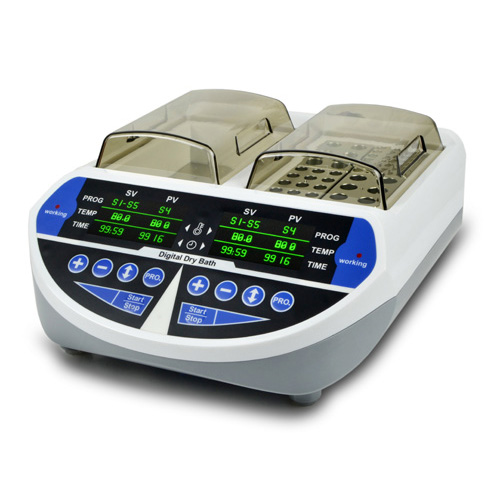Your shopping cart is empty!
MENU
- +
-
Categories+
- Blog +
- Contact Us +
- Login +
- Register +
 Which works better in heating your precious samples – heat blocks or water baths? While both perform similar functions, heat blocks and water baths have their pros and cons, and one may be more suitable for certain applications over the other. So, how do you choose one that suits your particular needs? Here are some things you may need to consider to increase your chances of making the right decision.
Which works better in heating your precious samples – heat blocks or water baths? While both perform similar functions, heat blocks and water baths have their pros and cons, and one may be more suitable for certain applications over the other. So, how do you choose one that suits your particular needs? Here are some things you may need to consider to increase your chances of making the right decision.
Heat Blocks vs. Water Baths: Getting Down to the Basics
Basically, a water bath is made from a stainless steel container filled with heated water and fitted with an analog or digital interface that can be used to set the desired temperature. Water baths are typically used for routine laboratory applications such as warming reagents, melting substrates and/or incubating cell cultures. And since there is little risk of ignition, they work great for heating flammable chemicals.
There are different types of water baths (e.g., circulating water baths or stirrers, non-circulating water baths and shaking water baths) that you can use for your particular application. For example, circulating water baths provide a more uniform temperature and are ideal for enzymatic and serologic applications, while shaking water baths are ideal for culturing cells, hybridization and molecular biology assays. Please take note that water baths can only be used up to 99.9oC so if you want to bring the temperature above 100oC, you may need to choose a different heating method.
On the other hand, a heat block is an incubator with a stainless steel chamber and aluminum blocks. It provides rapid, even heating and can accommodate different tube sizes (0.2 to 50 ml). It also features a powerful microprocessor to allow for more precise temperature control (can be used to provide a broad temperature range – from 5oC to 150oC).
Heat Blocks or Water Baths: Which One Should You Use?
Since water baths and heat blocks are equally effective and can both provide reproducible and accurate temperature control, this can be a tough question to answer. However, here are some things you may want to consider to determine which method is more suitable for your particular application.
Working Environment
As a general rule, avoid using water baths if you need to keep your working area free from contaminants. Water baths can easily be contaminated so using them for applications that require aseptic conditions (e.g., thawing reagents for tissue culture, RNA work) can be a disaster. For applications that require superior hygiene, use heated blocks instead.
Sample Container
Your choice of heating equipment may also depend on the container that you use. While water baths can accommodate any sample container as long as it fits and is properly sealed, heated blocks have more limitations when it comes to this. Heat blocks can only accommodate a particular type of container so you’ll need different blocks for different types of container. Since the costs can easily add up, this makes heat blocks more expensive.
Heating Time
If you need to heat your samples faster and more evenly, using a water bath can be a good idea. Water baths provide a larger surface area so you can heat your samples within a shorter period of time. And since water baths can store a substantial amount of heat, there is very little risk of temperature fluctuations - even if you are heating multiple samples at the same time. However, bringing a water bath to temperature may take several hours. To avoid this problem, most laboratories keep them on round the clock.
Heat blocks do not have the same amount of stored heat as water baths so it will take a longer time to heat your samples. In addition, you may not be able to heat multiple samples at the same time since heat blocks are more prone to heat fluctuations.
So, which one provides the best results? Well, it depends on your application, so choose wisely!
Leave a Comment